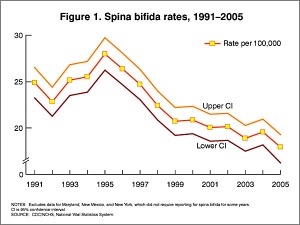Nutrition
Introduction
Folic Acid
In 2001, the Australian estimated birth prevalence of neural tube defects was 0.5 per 1,000 births (National Perinatal Statistics Unit). Low maternal dietary folic acid (folate) has been shown to be associated with the development of neural tube defects.
Iodine
"Iodine is an essential nutrient that humans need in very small quantities. The thyroid uses iodine to produce hormones vital to ensure normal development of the brain and nervous system before birth, in babies and young children. For this reason, it is very important that pregnant and breastfeeding women get enough iodine.
The National Health and Medical Research Council recommends that all women who are pregnant, breastfeeding or considering pregnancy, take an iodine supplement of 150 micrograms (μg) each day. Women with pre-existing thyroid conditions should seek advice from their medical practitioner prior to taking a supplement."
(text from Iodine supplementation for Pregnant and Breastfeeding Women 2010 )
- Links: Iodine Deficiency | Iodine supplementation for Pregnant and Breastfeeding Women NHMRC - Nutrition & Diet Publications
Vitamins
vitamin A
| entry to be edited |
vitamin B
Eight separate water-soluble vitamins that play important roles in cell metabolism. Folic acid or vitamin B9 (folacin) and folate (naturally occurring form) are an important dietary requirement for normal neural development. Low levels have been show associated with neural tube defects including spina bifida.
vitamin C
| entry to be edited |
vitamin D
Vitamin D is important Circulating 25-hydroxyvitamin D3 (25[OH]D), the most commonly used index of vitamin D status, is converted to the active hormone 1,25 dihydroxyvitamin D3 (1,25[OH]2D), which, operating through the vitamin D receptor (VDR).
The vitamin D receptor belongs to the nuclear receptor superfamily.
USA Institute of Medicine expert committee "calcium requirements varied with age, from 700 mg a day for children aged 1-3 years up to 1200 mg a day for women aged 51 to 70 and 1300 mg a day for teenagers and pregnant and lactating women."
- UK - Avoidance of vitamin D deficiency in pregnancy in the United Kingdom: the case for a unified approach in National policy.[1]
- USA 2004 - Vitamin D requirements during pregnancy.[2]
- Links: Dietary Reference Intakes for Calcium and Vitamin D | Paediatric Endocrine Group; Paediatric Bone Australasia. Prevention and treatment of infant and childhood vitamin D deficiency in Australia and New Zealand: a consensus statement. 2006 PMID16948623 | Vitamin D - a review 2008 PMID19142273 | AFP)
vitamin E
| entry to be edited |
vitamin K
A generic term for derivatives of 2-methyl-1,4-naphthoquinone that have coagulation activity. Daily requirement for vitamin K is about 1 µg/kg. In newborns vitamin K nutrition is at risk.
References
Reviews
Articles
Searck Pubmed
External Links
External Links Notice - The dynamic nature of the internet may mean that some of these listed links may no longer function. If the link no longer works search the web with the link text or name. Links to any external commercial sites are provided for information purposes only and should never be considered an endorsement. UNSW Embryology is provided as an educational resource with no clinical information or commercial affiliation.
- USA nutrition.gov http://www.nutrition.gov/ | Life Stages - Women Pregnancy | Life Stages - Infants
- Medline Plus Infant and Newborn Nutrition
- Australia NHMRC
Glossary Links
- Glossary: A | B | C | D | E | F | G | H | I | J | K | L | M | N | O | P | Q | R | S | T | U | V | W | X | Y | Z | Numbers | Symbols | Term Link
Cite this page: Hill, M.A. (2024, June 3) Embryology Nutrition. Retrieved from https://embryology.med.unsw.edu.au/embryology/index.php/Nutrition
- © Dr Mark Hill 2024, UNSW Embryology ISBN: 978 0 7334 2609 4 - UNSW CRICOS Provider Code No. 00098G
